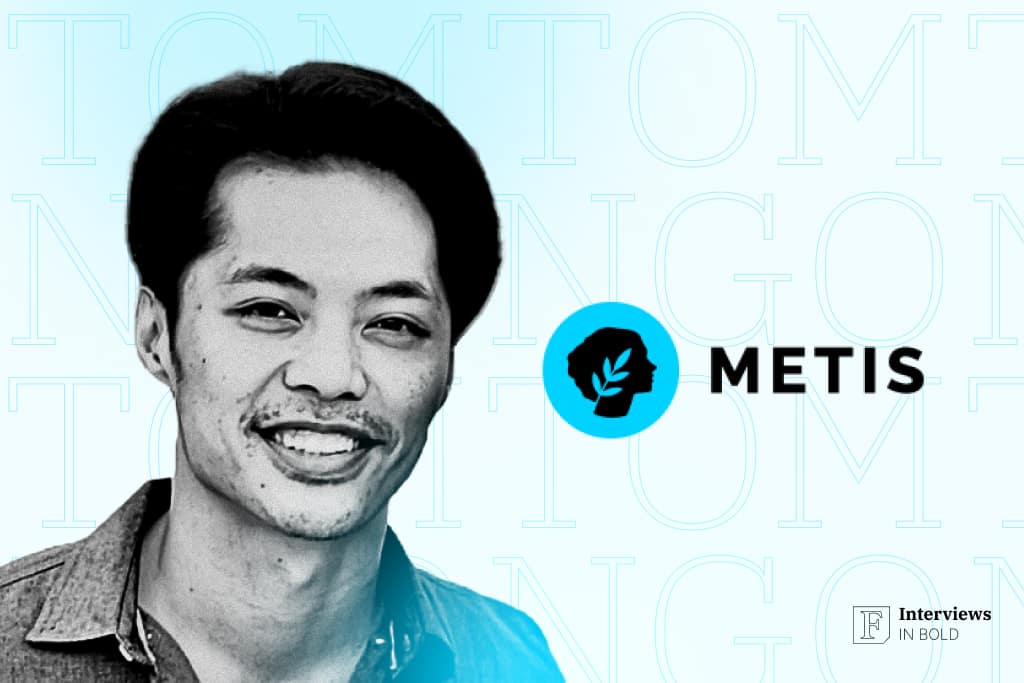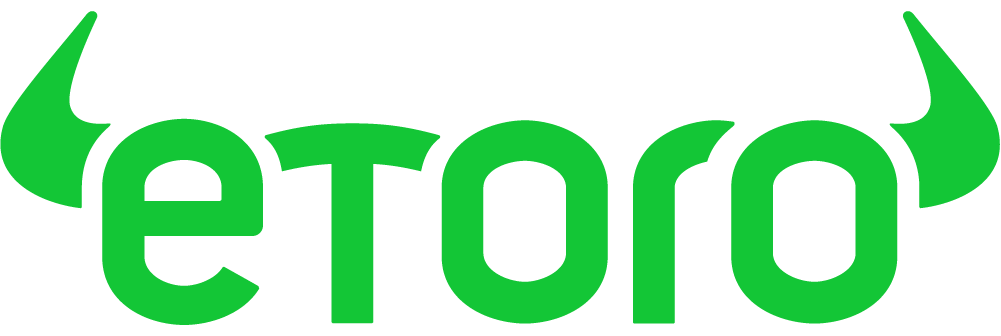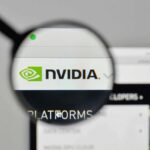The start of a new year always brings new beginnings, and Metis made waves in January with its strategic refocus, ReGenesis. The innovative ETH Layer 2’s plan is designed to address key challenges across its ecosystem, with a special focus on developing infrastructure tailored to the unique demands of artificial intelligence to create a decentralized, scalable, and ethical AI ecosystem. I sat down with Tom Ngo, Executive Lead at Metis, to learn more.
Good morning Tom, to start with, can we please discuss the state of Web3 today as you see it?
Hi, thanks for having me here. So, straight off the bat what truly excites me most about the Web3 sector today is its rapid evolution that has seen it extend beyond the realm of financial applications alone. While DeFi was undoubtedly an important first step for the industry to mature, we are now witnessing the rise of blockchain as a foundational technology across diverse domains like AI, gaming, digital identity and much more.
Now let’s get to what everybody seems to be wanting to ask you about, i.e. Metis ReGenesis. On the surface, it seems to be more than just a technical upgrade?
After achieving a key milestone with our decentralized sequencer (DSEQ) last year, we asked ourselves the question, “What’s next for Layer-2s now?,” especially since we found most L-2s to still be focused on basic scaling operations.
Seizing this opportunity we decided to specialize and build an infrastructure tailored for specific emerging technologies rather than just general-purpose scaling. AI stood out as the perfect use case as it demands exactly what blockchain can offer — verifiable computation, secure data storage, and autonomous execution.
With ReGenesis, we’re looking to redefine Metis’ role across the global blockchain fray, ensuring that our infrastructure is built with AI in mind from the start. This means reworking our network to handle AI’s unique demands, such as high-speed computation and data validation, rather than just focusing on transaction throughput.
But let’s make one thing clear, our emphasis is not on following trends but rather on building the missing pieces AI needs to function securely and ethically in a decentralized world.
The Metis team has outlined quite the ambitious roadmap for 2025, including fraud proofs and data availability migration to Ethereum L1. Can you please comment on the same?
The proposed upgrades will be essential in making Metis not just faster or cheaper, but fundamentally more secure and aligned with Ethereum’s broader ecosystem. For instance, our fraud proof mechanism will introduce an on-chain challenge mechanism that ensures any incorrect state transitions can be disputed, making the network far more resilient to malicious activity.
It’s a crucial step towards making Metis fully trustless.
Meanwhile, migrating our data availability layer to Ethereum’s L1 using EIP-4844 will greatly enhance network decentralization while reducing overhead costs, ensuring that we evolve alongside the mainnet rather than operating in isolation.
Another major development expected in 2025 is Metis achieving Full EVM (Ethereum Virtual Machine) equivalence. What does this entail exactly?
Simply put, it makes development on Metis as easy as developing atop the Ethereum network. Right now, there are subtle differences between Ethereum and its L2s requiring developers to tweak their code, configure custom settings, or debug unexpected behavior.
Full EVM equivalence eliminates these bottlenecks, allowing developers to deploy smart contracts on Metis exactly as they would on Ethereum, using the same tools and frameworks.
This standardization not only reduces friction for developers but also ensures that Metis remains fully compatible with all future Ethereum upgrades. By maintaining complete alignment with Ethereum’s technical roadmap, we will ensure that builders can confidently choose Metis as a long-term development platform without having to worry about any future compatibility issues.
Thanks, next up I’d like to discuss Metis’ recent push to become the ‘home for AI.’ Why is AI such an important focus for Metis?
It’s no secret that the AI industry has undergone a rapid transformation over the last couple of years; however, despite the technology’s promise, its development has remained dominated by a few centralized tech giants. Most AI models today rely on computing infrastructure owned by Microsoft, Amazon, and Google for training, and these same corporations control much of AI’s distribution and commercialization — raising concerns about transparency, accessibility, and data ethics.
The blockchain helps change this status quo by providing a decentralized infrastructure that ensures AI models are transparent, ethical, and accessible to more people. As a result, my team and me view AI as an ideal use case for blockchain integration, especially since the former relies heavily on high-quality data, secure computation, and transparent decision-making.
Another point I’d like to highlight in this regard is that while many blockchain projects seem to be jumping on the AI bandwagon — without deeply considering what the technology actually needs — Metis’ approach is different since we are building infrastructure specifically designed for AI applications.
In other words, we’re not just providing a platform where AI projects can exist; we’re creating the fundamental tools they need to succeed, from decentralized storage solutions to verifiable data frameworks. Our approach ensures that AI’s future is decentralized, fair, and innovative.
One of the core innovations currently permeating the Metis ecosystem is the Data Anchoring Token (DAT). How does the offering stand to change the way data is owned and valued in AI?
Make no mistake about it, data is the lifeblood of all AI-centric processes, but as things stand today, it’s often stored in corporate silos, with little transparency over how it’s used or who benefits from it. In this context, the Data Anchoring Token (DAT) introduces a new way of managing AI data by embedding ownership, verification, and monetization directly onto a decentralized ledger
Moreover, each DAT represents a dataset with verifiable provenance, ensuring that AI models are trained on high-quality, trusted data rather than unverified or manipulated sources. Beyond data integrity, DATs also enable fair compensation for data contributors such that instead of tech giants collecting and profiting from data without returning value to its original sources, DATs create an ecosystem where contributors can earn revenues based on how their data is used.
I imagine such a setup will help spur the AI landscape towards a more democratic and ethical setup, one where the value of data is recognized and distributed fairly.
Another unique concept introduced by Metis is that of individual-centric DAO (iDAO). Can you please expound on these offerings and their core functionalities?
While traditional DAOs have tended to focus on governance for projects or communities, iDAOs take this a step further by allowing AI models and datasets to be governed autonomously. Each iDAO operates as a self-contained ecosystem, where data collection, model training, and AI agent management are handled transparently through decentralized governance.
The beauty of iDAOs is that they allow AI systems to evolve collaboratively while maintaining individual sovereignty. For example, one iDAO might focus on verifying data quality, another on training models, and others on running AI agents. By connecting these iDAOs into a larger network, we are helping facilitate an AI ecosystem that is both decentralized and highly specialized — ensuring that each component is accountable while still contributing to the bigger picture.
One last question Tom. Metis has recently become heavily involved in DeFi AI (DeFAI). Is this a space you’re keen on exploring heavily?
In just the last couple of years, the DeFi realm has evolved beyond simple automated strategies into something much more sophisticated. For instance, we now have fully autonomous financial agents that can adapt to arising market situations in real-time.
Keeping these developments in mind, our team is actively building the ideal infrastructure for these agents — one that combines our decentralized sequencer (DSEQ) with AI-powered decision-making tools. This will help enable the creation of advanced DeFi applications like autonomous trading, liquidity optimization, and AI-driven governance systems.
Simply put, by integrating AI into DeFi, we’re enabling more efficient and intelligent financial ecosystems with our long term vision being to create an environment where AI agents don’t just execute predefined strategies but actually analyze market trends, make intelligent decisions, and improve financial operations autonomously — all while maintaining a high level of transparency and decentralization.
Read more interviews here.






